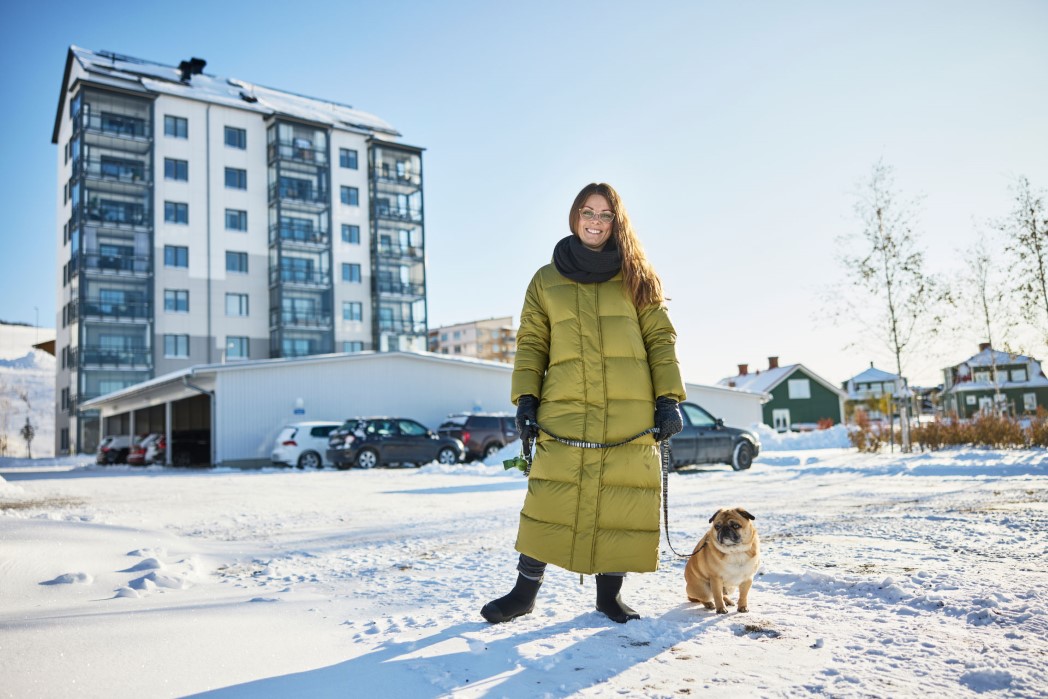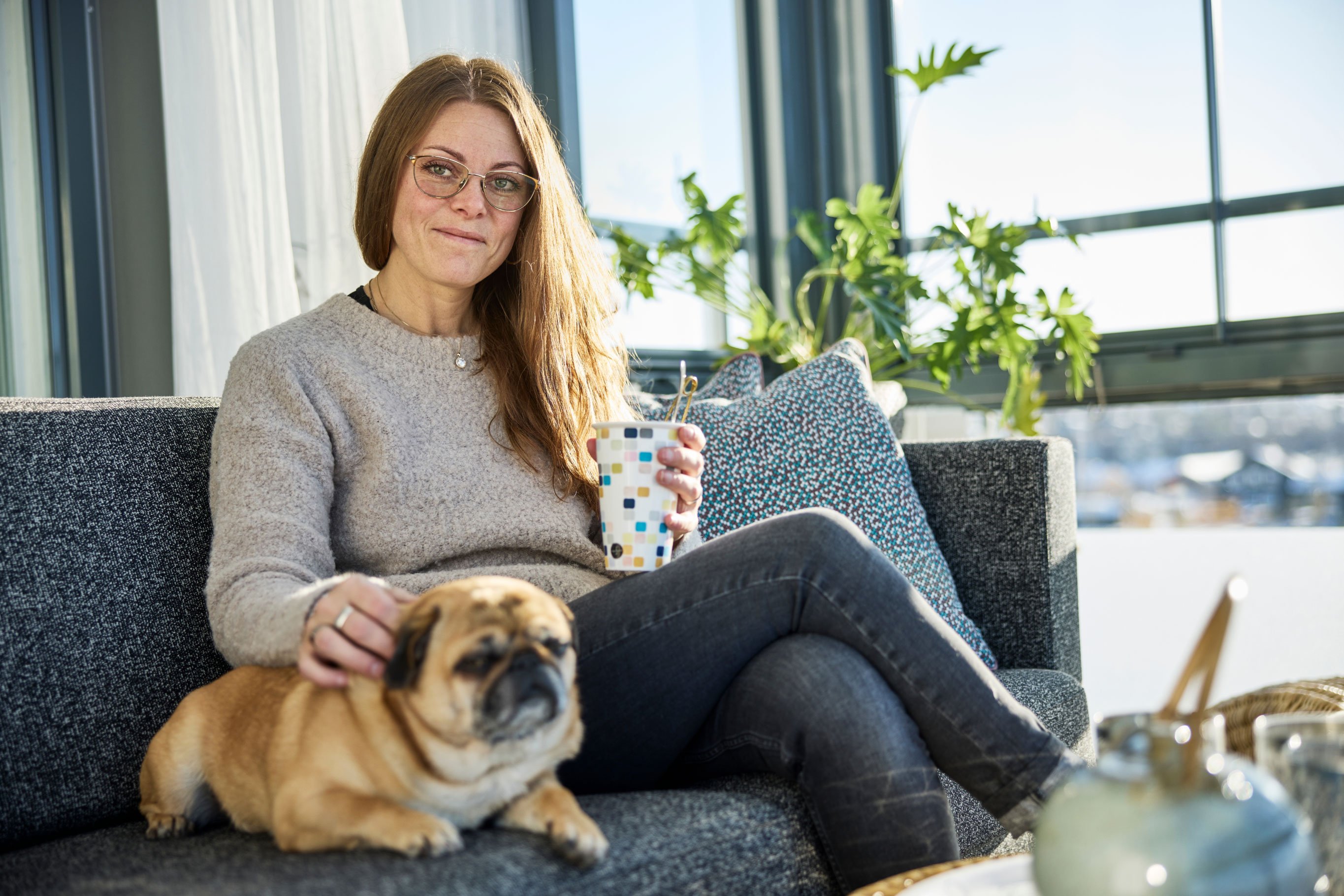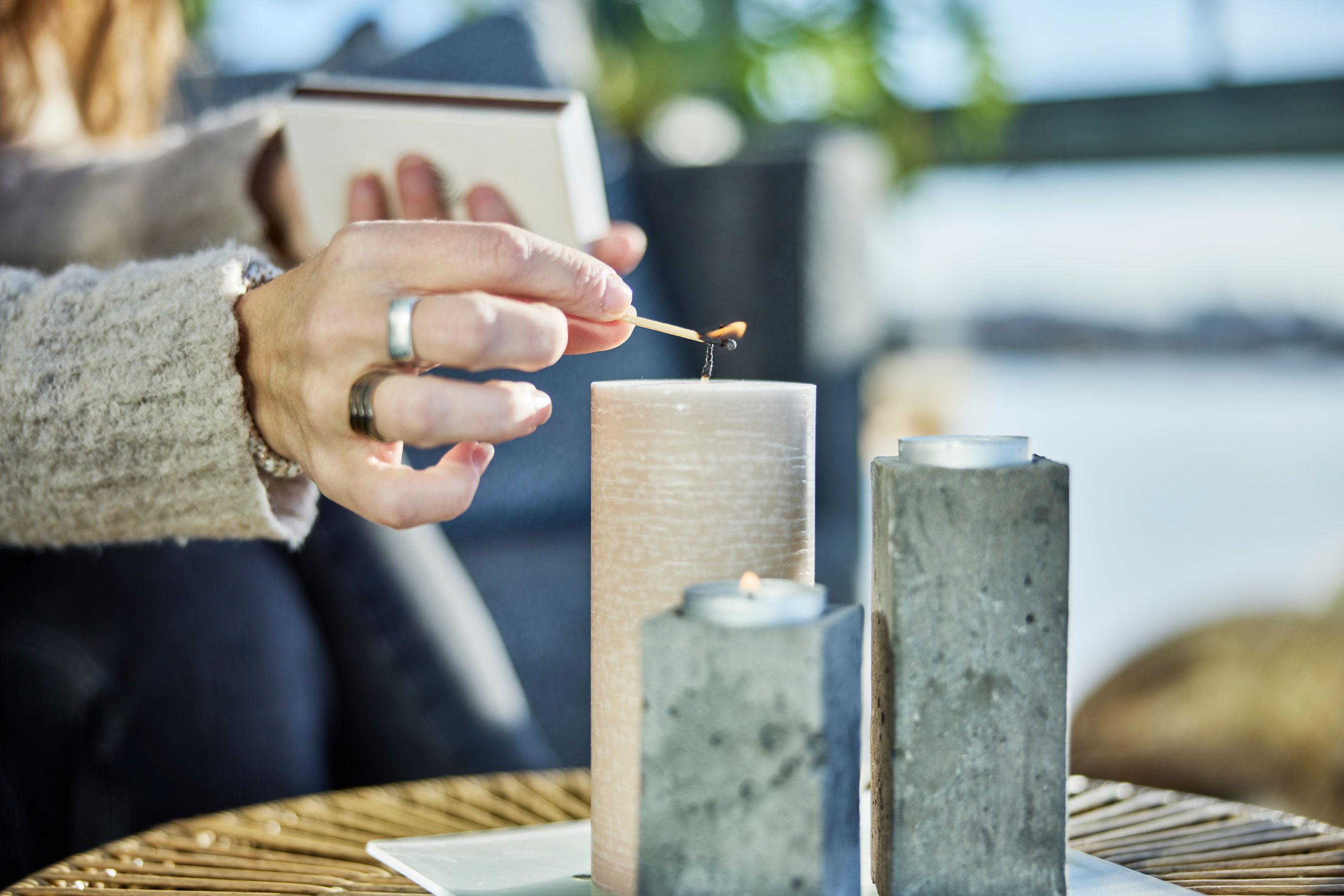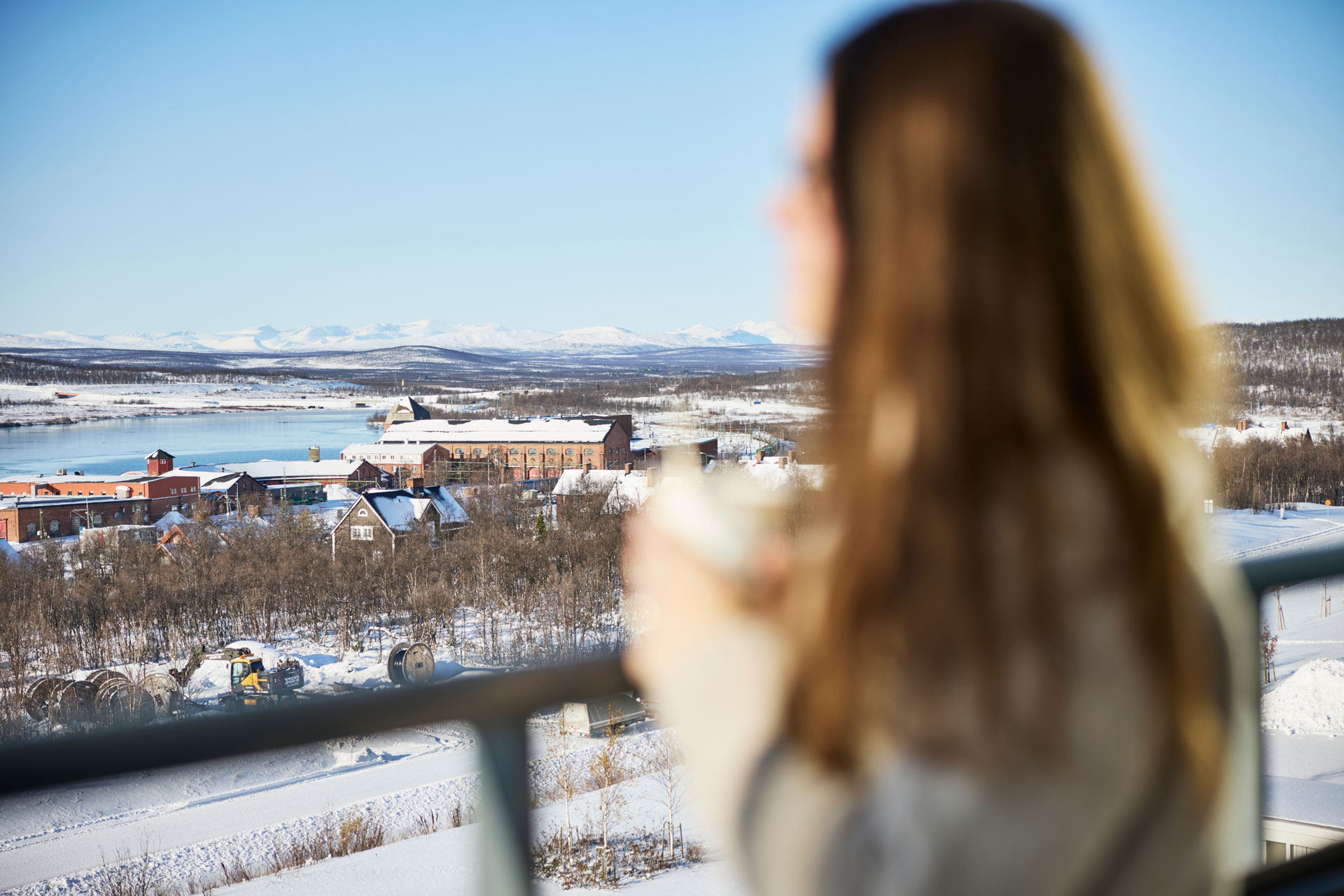🇸🇪 House of the midnight sun – energy efficiency north of the Arctic Circle

The rugged mining community of Kiruna is one of Sweden’s northernmost cities. In winter, temperatures drop below -30 degrees Celsius. Despite the extreme cold, buildings here are more energy efficient on average, than in the rest of Sweden and the EU.
By Mattias Dahlström
“It was the location that made me want to move to this flat,” says Johanna Lindgren, enjoying the view from her balcony.
Lake Luossajärvi is nearby, its strikingly deep blue waters have not quite frozen yet. In the distance, snow-capped mountain peaks – Sweden’s highest mountain, Kebnekaijse, among them – reach up towards and almost seem to merge with the clouds.
“At first, everything else was mostly a bonus.”
The “everything else” Johanna refers to are the innovative energy efficiency systems in her building, Fjällvyn, owned by her housing association. With clear temperature limits for radiators and hot water, triple-glazed windows, and a system that reuses 70 per cent of circulating air, energy use has been reduced to 96 kWh per square metre a year. The average in Sweden is 129 kWh.
“One of the biggest differences compared to other flats I’ve lived in is the insulation,” Johanna explains. “It has a dual effect: heat consumption is reduced, and it’s incredibly quiet. You can play music pretty loudly here without disturbing your neighbours!”

Understanding the overall picture is key
Lars Lundgren is Area Manager at property company Riksbyggen, which built and manages Fjällvyn and a similar property, Fjällblicken. He has seen how energy efficiency has influenced the way the industry builds properties, and perhaps to an even greater extent, how it controls them.
“We build more densely now, with thicker walls and more energy-efficient windows, but I don’t think that’s the main change; it’s more the greater extent to which we now follow up on what we build. This applies to electricity consumption, of course, as well as hot and cold water, ventilation and wall density. The aim is to maximise efficiency. By measuring how the isolation works and consumption of energy and heat significantly more, we optimise how buildings are used,” says Lundgren.
Lundgren and his colleague at Riksbyggen, Environment and Energy Director Mari-Louise Persson, know that this is where the next major steps in energy efficiency are to be made.
“A lot of this is about keeping track of and adjusting what we have,” says Persson. “The behavioural issue also has a role to play here. By measuring hot water, for example, we reduce hot water use. It becomes a way to raise awareness of how everything is connected, how the length and water temperature of your morning shower affects the planet.”
Mikael Risberg conducts research on energy technology at Luleå University of Technology. He believes that the overall picture is key when making buildings energy efficient.
“There’s no point in installing a lot of high-end insulation and then putting in bad windows. You can’t just optimise one thing or one area, you have to look at the building as a whole. It’s also important that you check the systems you’ve installed to ensure they work as intended. Ventilation and heating systems often need adjusting, for example,” Risberg explains.
200 kilometres north of the Arctic Circle
Reduced energy consumption has positive effects from a financial perspective, too. Soaring energy prices in recent years have affected Fjällvyn less than many other housing associations.
“This has a positive impact on our costs,” says association chair Jan Sydberg. “There are other financial challenges, such as spiralling interest rates on sizeable loans because the buildings are new-builds, but low electricity consumption is in itself extremely positive. Day-to-day running costs are low,” Risberg says.
Being able to build, and live energy efficiently in Kiruna also shows the potential that exists. The mining community is located 200 kilometres north of the Arctic Circle – there is frequently snow on the ground here from the end of October to the end of April. During the coldest winter months, temperatures drop below minus 30 degrees Celsius. In the nearby village of Naimakka, minus 42.7 degrees Celsius was recorded two years ago, an icy indication of the extreme temperatures here, especially in December and January.
“If you live this far north, you’re forced to think about energy efficiency,” Sydberg notes. “You have to think about ventilation, insulation, windows and other things when building. It’s a way of keeping up with the times.”
Heating system tweaks ensure even temperatures
When studying energy efficiency in apartment buildings, Risberg has encountered challenges related to how to adjust and distribute heat.
“The way you build your heating system is key. If you don’t adjust it properly, it’s too hot for people living at the top of the building and too cold for those lower down the building. These differences become much more accentuated when there is less heat demand in a building in general. A little too much heat can make it too hot.”
At the same time, external impacts of weather and wind are effectively becoming a test for the EU’s energy efficiency measures for the entire housing stock. If you can build energy efficient buildings in Kiruna, it should be possible to do so almost anywhere. It’ll be necessary, too. Buildings account for roughly 40 per cent of the EU’s energy consumption and 36 per cent of the bloc’s carbon dioxide emissions.
New-build, energy-efficient homes will hopefully bring those figures down, together with energy-efficient renovation of the existing housing stock. However, the latter has sparked controversy in the EU recently, with the EU Commission’s proposals for stricter requirements on energy-efficient renovations prompting push-back from Italy.
“It’s great that people are starting to talk about introducing requirements for the existing housing stock because that should bring greater attention to this issue,” says Persson. “We just need these requirements to be reasonable and easy to interpret simply and effectively.”
A chance to go again and get it right
Kiruna’s potential for energy-efficient, new-build construction depends to some extent on a unique set of circumstances. Due to iron ore mining being so fundamental to the town and the fact that the mine expanded towards the city, it has been necessary to move parts of Kiruna and nearby Malmberget. Entire buildings have been packed up and rebuilt.
For Johanna, who runs a shop that has been in the family, and the town, for almost 100 years, the ongoing move has left her with mixed feelings.
“It’s been chaotic here,” she says. “Most people are happy that they haven’t built completely new homes but have retained the Kiruna culture by including facades, structures and Sami elements. They’ve nicely woven it all into the cityscape.”
In the new Kiruna, a lot of effort has been invested in finding space for the old, and adding many new buildings, such as Fjällvyn and Fjällblicken, to the mix in a way that is sensitive to its surroundings.
“It’s obviously not especially sustainable to construct so much new-build,” says Lundgren. “But we have a unique situation in Kiruna, and it offers us a chance to change and get things right. Here in Kiruna, we can actually build energy-efficient buildings from the outset.”
Originally published on 30 October by Vattenfall.
Announcements are published as a service to readers. The sender is responsible for all content.
Announcements for publication can be submitted to pr***********@ar**************.com.

